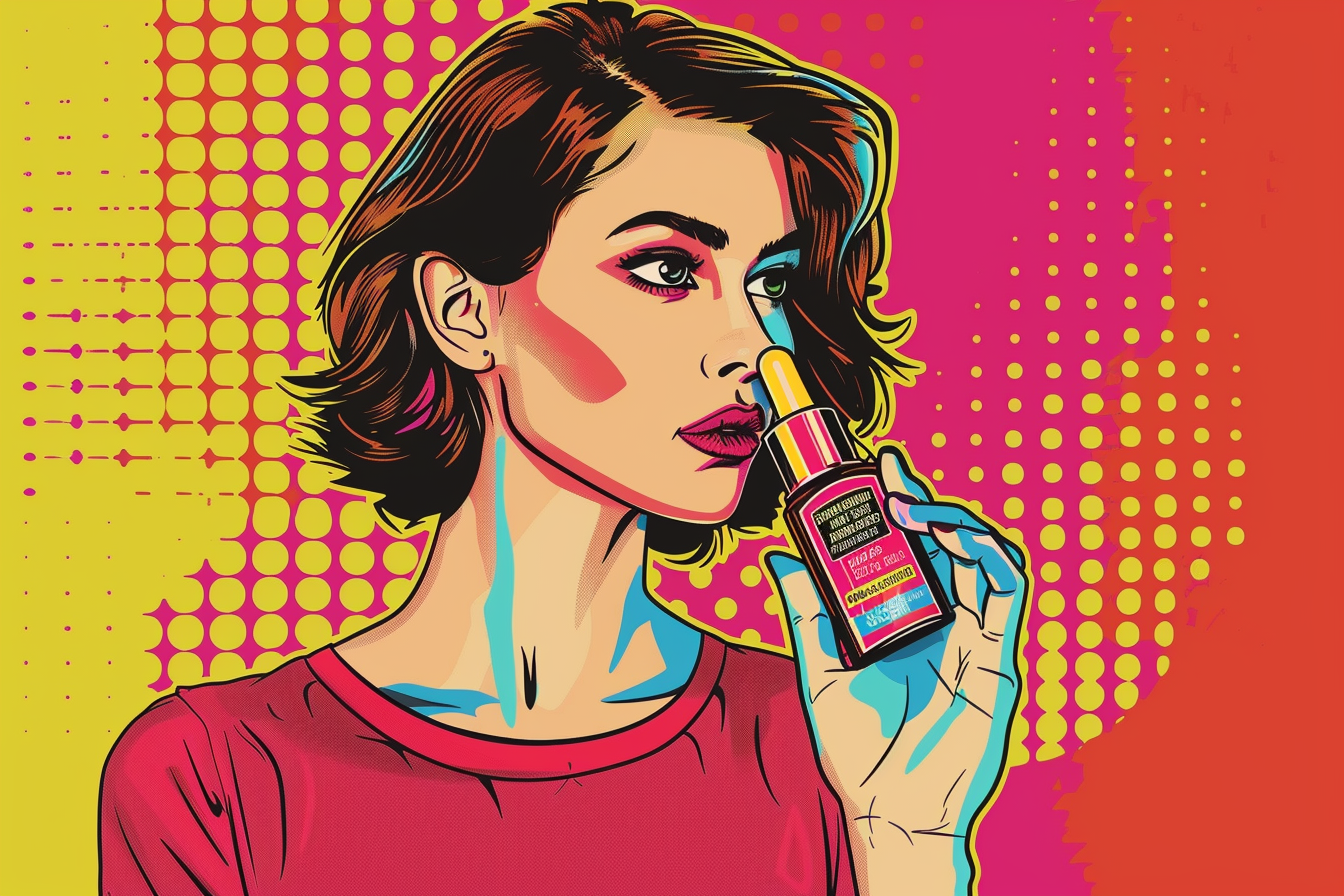
Facial Dry Brushing: A Gentle Approach to Revitalized Skin
Did you know that your skin sheds up to a million cells daily? This natural process highlights the importance of gentle exfoliation to keep your face healthy and glowing.
Facial dry brushing is a mindful skincare ritual tailored to suit the delicate nature of facial skin. By using a soft-bristled brush designed specifically for this purpose, you can promote healthier skin, all while practicing a non-invasive beauty technique.
If you've been wondering why your skincare products sometimes fail to fully absorb, or why your skin occasionally feels dull even after cleansing, this guide will address your concerns.
Facial dry brushing not only exfoliates efficiently but also enhances product absorption and rejuvenates your skin’s natural glow.
This article provides a comprehensive look into what facial dry brushing is, its potential benefits, and the exact steps to perform it safely at home.
Whether you're a skincare enthusiast or someone simply curious about this trending beauty practice, you’ll find actionable and evidence-based insights here. Let’s start by exploring the fundamentals of facial dry brushing and why it might be the next step in your skincare journey.
Loading...
Understanding Facial Dry Brushing: A Comprehensive Guide
What Is Facial Dry Brushing?
Facial dry brushing is a simple skincare technique where you use a soft-bristled brush to gently exfoliate your face and boost circulation. This method is tailored specifically for the delicate skin on your face and involves light strokes, usually starting from your neck and moving upward toward your hairline.
Unlike body brushing, this practice uses softer bristles and gentler motions to suit thinner, more sensitive skin.
Benefits of Facial Dry Brushing
Facial dry brushing can improve your skin health in several ways:
- Exfoliating dead skin cells, leaving your face smoother
- Enhancing blood flow and delivering essential nutrients to your skin
- Encouraging lymphatic drainage, which reduces puffiness
- Improving the absorption of skincare products like serums and moisturizers
- Promoting a natural glow when done consistently
The Science Behind Facial Dry Brushing
This technique lightly exfoliates your skin, supporting cell renewal while improving circulation in facial tissues. Increased blood flow delivers oxygen and nutrients to the skin, helping it heal and replenish. Lymphatic drainage helps eliminate toxins that can cause swelling or congestion. Over time, this gentle stimulation may even encourage subtle collagen production, improving elasticity.
Differences Between Facial and Body Dry Brushing
Though these techniques share the same principles, facial and body dry brushing vary significantly:
- Facial brushes have softer bristles to protect the delicate skin on your face
- Lighter pressure is used to avoid irritation
- Smaller, more focused motions accommodate the contours of your face
- The process is shorter since your face covers less area
Precautions and Risks
If rushed or done improperly, facial dry brushing can harm your skin. Keep the following risks in mind:
- Applying too much pressure or brushing too frequently can irritate your skin
- A dirty brush can harbor bacteria, potentially leading to breakouts
- Brushing over sensitive skin or active breakouts can worsen irritation
- Overuse may compromise your skin’s natural barrier, leading to dryness or sensitivity
When to Avoid Facial Dry Brushing
In some situations, it’s better to skip this technique entirely. You should avoid facial dry brushing if:
- You have active pimples, acne breakouts, or clogged pores
- You struggle with conditions like rosacea, eczema, or psoriasis
- You have cuts, wounds, or irritated skin
- Your skin is unusually sensitive
- You’ve recently had a chemical peel or another professional treatment
How Often Should You Dry Brush Your Face?
How often you perform facial dry brushing depends on your skin type and tolerance:
- Sensitive Skin: Once weekly with a soft brush to minimize irritation.
- Normal or Combination Skin: 1-2 times per week, followed by a good moisturizer.
- Oily or Acne-Prone Skin: Up to twice a week, avoiding active breakouts and cleaning the brush thoroughly after each use.
Always start slowly and pay attention to how your skin responds. If you notice redness, irritation, or dryness, scale back the frequency.
Guided Steps for Facial Dry Brushing
Selecting the Right Brush
Use only brushes with soft, natural bristles. Brushes made from materials like goat hair are ideal for avoiding unnecessary friction or irritation.
Preparing Your Skin
Start with a clean face. Remove all traces of makeup and skincare products to prevent clogged pores and maximize exfoliation.
Using Proper Technique
Follow these steps for effective facial dry brushing:
- Begin at your neck, brushing upwards toward the jawline.
- Use gentle, sweeping motions from your cheeks to your forehead, always moving upwards and outwards.
- Avoid pressing too hard; let the bristles do the work.
Time and Aftercare
Limit each session to 2-3 minutes to prevent overstimulation. Follow up immediately with a hydrating serum or moisturizer to replenish your skin’s barrier.
Brush Maintenance
Clean your brush weekly using gentle soap and water. Dry the brush with its bristles facing downward to prevent moisture from damaging the handle. Replace the brush every few months for optimal hygiene.
Adjusting Facial Dry Brushing to Your Needs
Your skin is unique, so customization is key. Adjust your technique or skip it altogether if you experience sensitivity. If you’re managing specific concerns like uneven skin tone or early signs of aging, consult a dermatologist to ensure this method aligns with your overall skincare plan.
Practical Insights for Better Application
Facial dry brushing is a beneficial technique when approached with care, moderation, and proper methods in mind.
Incorporating Facial Dry Brushing into Routine
Start dry brushing once per week, gradually increasing frequency as your skin adjusts to the treatment.
- Use a soft-bristled brush designed specifically for face exfoliation.
- Perform the technique on clean, dry skin with gentle, upward motions.
- Focus on areas prone to congestion, such as your jawline and cheeks.
- Follow up with a hydrating moisturizer to restore your skin barrier.
Points to Remember for Safe Practice
Pay attention to how your skin reacts and adjust your frequency accordingly to avoid overexfoliation or irritation.
- Avoid brushing over active acne, sensitive skin, or conditions like eczema and rosacea.
- Always clean your brush weekly to prevent bacteria buildup and replace it every few months.
Facial dry brushing can refresh your skin, improve circulation, and enhance lymphatic drainage when used correctly.
Citations:
https://www.pranabrush.com/blogs/blog/dry-brushing-your-face-the-complete-guide https://alamoheightsderm.com/expert-insights-what-a-dermatologist-says-about-dry-brushing-for-your-skin/ https://primallypure.com/collections/dry-brushes https://health.clevelandclinic.org/the-truth-about-dry-brushing-and-what-it-does-for-you https://daniellegervino.com/dry-brushing/ https://www.healthline.com/health/beauty-skin-care/dry-brushing https://www.byrdie.com/dry-brushing-for-skin https://www.verywellhealth.com/dry-brushing-skin-benefits-5089301 https://www.dermstore.com/blog/top-5-benefits-of-dry-brushing-for-your-skin/ https://www.skincare.com/article/dry-brushing-for-skin-benefits, https://www.healthline.com/health/beauty-skin-care/dry-brushing https://www.dermalogica.com/dry-brushing-benefits/skincare-tips.html https://www.medical-encyclopedia.com/dry-brushing-technique.©copyright 2024,Valentia Skincare, all rights reserved.










